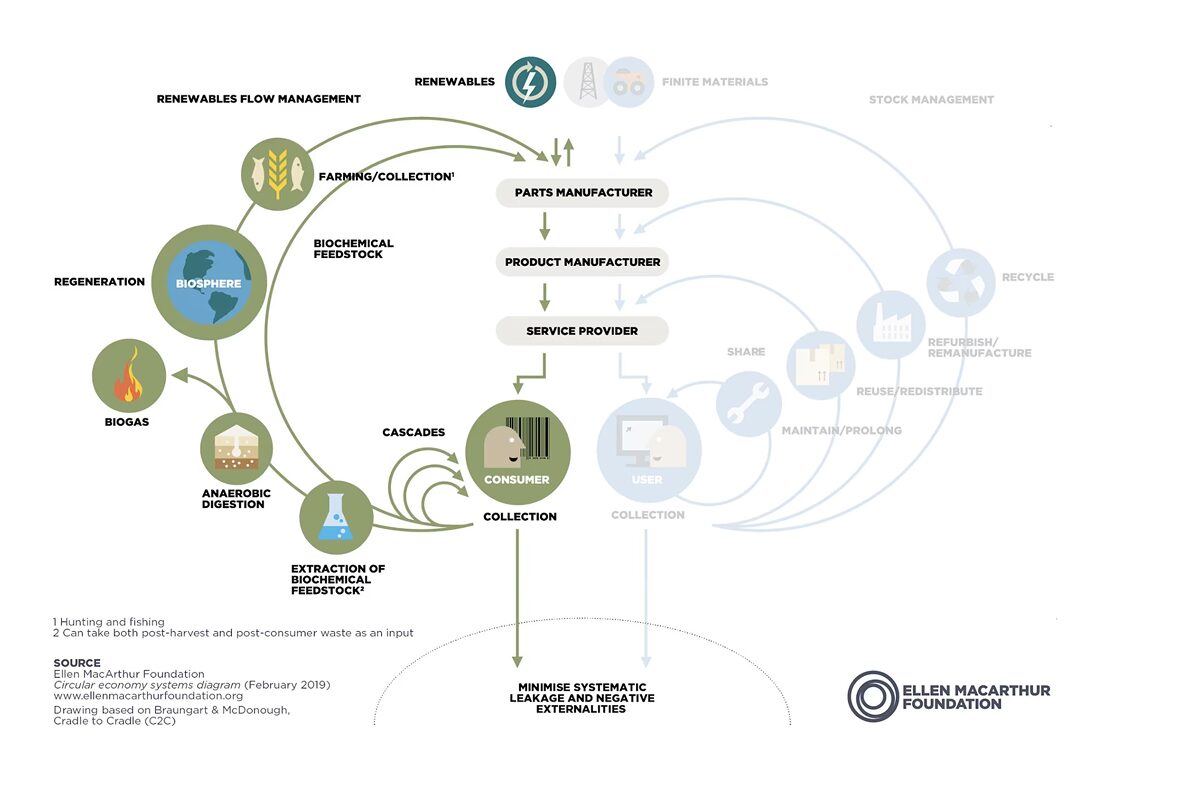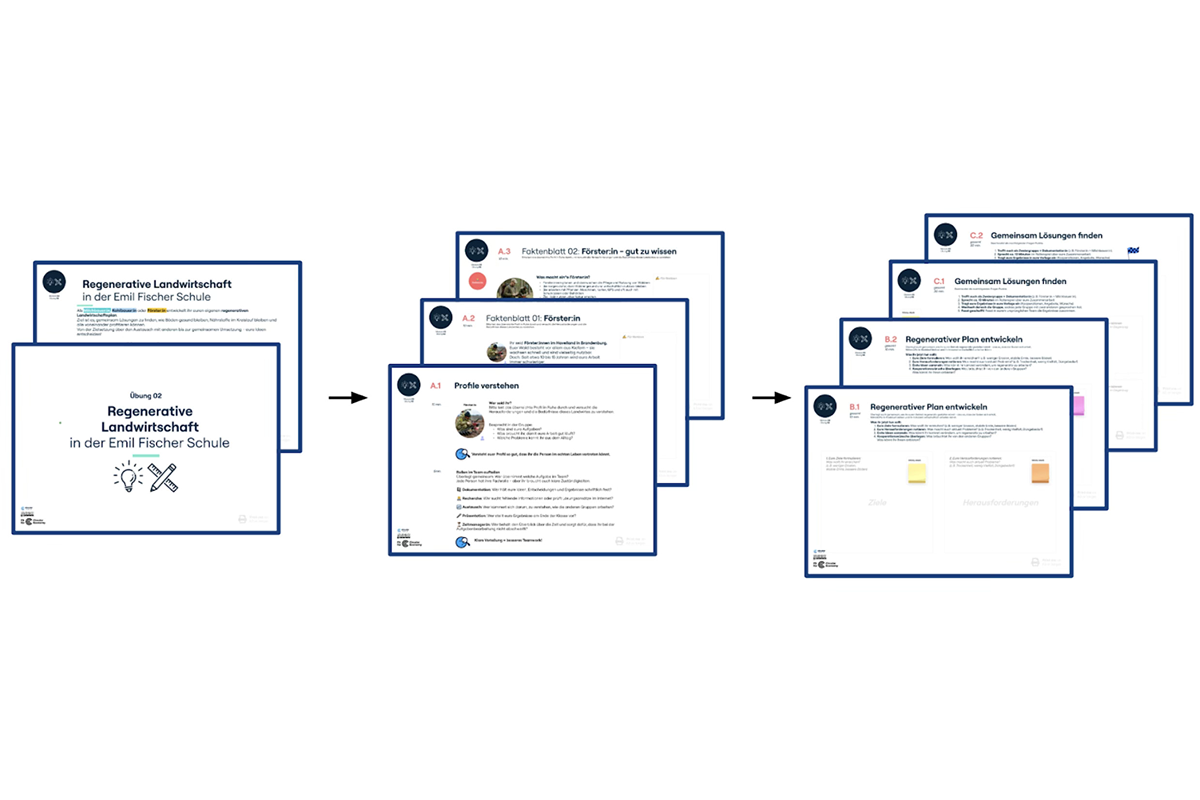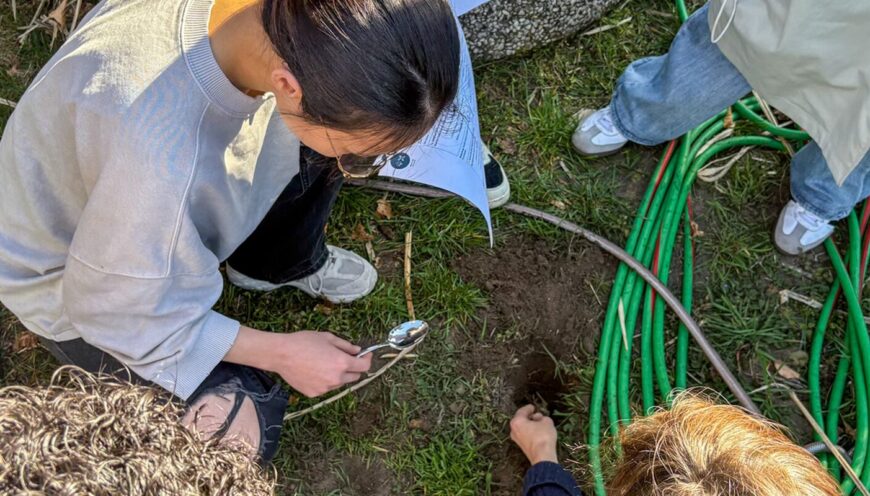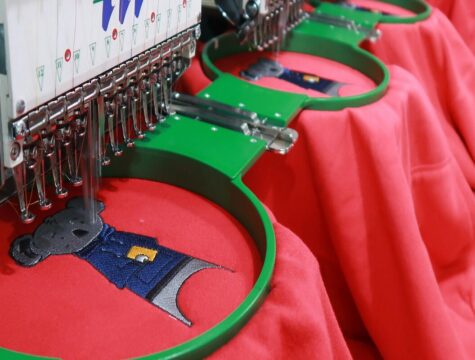Food isn’t just something we eat – it’s part of a larger system that connects soil, water, climate, and communities. In Berlin, we are rethinking food through the lens of the Circular Economy: an approach that closes loops, reduces waste, and creates value at every stage.
At Circular Berlin, we believe food holds the power to make circularity tangible, relatable, and actionable. It’s the perfect starting point to understand the systems that shape our lives.
Whether you are a young chef, food technician, farmer, procurement specialist, educator, or simply a curious Berliner, it’s time to stop seeing the food system as a straight line – and start seeing it as a circle full of possibilities.
Why Food is at the Heart of the Circular Economy
The food sector is a key part of the biological cycles, where resources such as soil and water are constantly in use and, if managed well, can regenerate naturally.

The current challenges along the value chain are critical.
Starting from Farming & Agriculture we face soil degradation, erosion, and biodiversity loss due to monocultures. Agriculture uses 70% of the world’s freshwater and produces about one-third of global greenhouse gas emissions, with meat and dairy among the most carbon-intensive products.

Looking at the Processing & Procurement, where global supply chains lack transparency, making it difficult to trace origins and working conditions. Recipe creation often relies on resource-intensive ingredients sourced far from where they are consumed.
Further in the Consumption we pick up the topic of waste, up to 40% of all food is lost or wasted globally. In Germany, that’s around 11 million tons per year, much of it perfectly edible. And little is done to return nutrients to the soil via composting or anaerobic digestion.
That’s why integrating circular economy principles into the food system is so critical.
Circularity in food means rethinking the system from the ground up. According to Ellen MacArthur Foundation principles:
- Working with natural cycles – regenerating soils, protecting biodiversity, and returning nutrients to the land.
- Designing food for sustainability – from crop diversity to upcycled ingredients and low-impact sourcing.
- Reducing waste at every stage – prevention first, then recovery, reuse, and recycling of unavoidable losses. Preventing food loss means more affordable food, stronger local supply chains, and new business opportunities in reuse, processing, and upcycling.
- Creating a bioeconomy – turning non-edible by-products into compost, animal feed, or bio-based materials.
Circular Berlin’s Approach: Education for Action
To make change tangible, Circular Berlin has launched Fit for Circular Economy – a four-module course developed with the Emil Fischer School, funded by the Berlin Senate’s MPI Program for Economic development.
The course is designed for vocational students in gastronomy and food-related professions, but its principles apply to anyone shaping the food system:
Module 1: Introduction to Circular Economy – What is a circular economy, and how can food systems embrace circular logic? We looked at the examples of non-food areas to see what we can transfer into the food specific context. But also visiting the company Florida Eis, which is producing ice cream with renewable energy, focusing on regional ingredients, and reducing cooling emissions in production and transport just reinforced the knowledge.
Module 2: Value Creation through Agriculture – How do soil health, nutrient cycles, and regenerative practices preserve long-term value? We looked at the local case studies from Berlin, like Melchhofgärtnerei, a regenerative farm using crop diversity, minimal tillage, and composting to keep nutrients cycling on-site.
Module 3: Value Creation through Procurement – What role does sourcing play in sustainability? How do conscious buying decisions influence sustainability across the value chain? Here we had a chance to experience Café Botanico, which is growing ingredients in a permaculture garden in Berlin – Neukölln, supplying their kitchen directly and cutting transport emissions to nearly zero. Or Happa Berlin – Upcycling surplus produce into seasonal menus, preventing edible food from going to waste.
Module 4: Value Preservation after Consumption – How do upcycling and fermentation help preserve food value and reduce waste? What is the strategy in preventing food losses? We can learn from such practitioners as FREA bakery and restaurant founder, the zero-waste vegan restaurant, using a closed-loop composting system to turn kitchen scraps into soil for their suppliers, as well as direct work of Roots Radicals – a Berlin-based zero-waste food company turning surplus and “imperfect” produce into gourmet preserves, sauces, and condiments, proving that upcycling can be both delicious and scalable.
Each module blends theory with practice: real-world examples, group collaboration, expert input, and hands-on exercises. Learners explore cases like:
- How circular food design starts on the farm, not the packaging line.
- Why prevention is the most powerful waste strategy.
- How companies are reducing losses at harvest and during processing – from tomatoes to bread.
- The role of bioeconomy solutions for unavoidable food by-products.

From Education to System Change
Food is more than nutrition or taste – it’s a system, a set of values, and a web of choices. By integrating circular economy thinking into everyday food decisions, we can:
- Cut emissions and protect water and soil.
- Recover value from food before and after it reaches the plate.
- Build resilience in times of climate and economic shocks.
Circular Berlin’s work in food education is a starting point and an open invitation. Whether you’re a chef, procurement manager, startup founder, or community organiser, you can help turn the linear food chain into a circular food system.
Let’s rethink food. Let’s preserve value. Let’s make Berlin circular.




